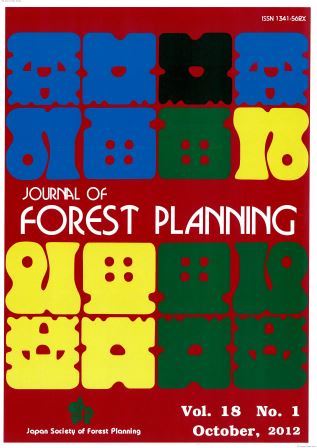Volume 18, Issue 1
Displaying 1-11 of 11 articles from this issue
- |<
- <
- 1
- >
- >|
-
Article type: Appendix
2012Volume 18Issue 1 Pages App1-
Published: 2012
Released on J-STAGE: November 01, 2017
Download PDF (94K) -
Article type: Appendix
2012Volume 18Issue 1 Pages App2-
Published: 2012
Released on J-STAGE: November 01, 2017
Download PDF (94K) -
Article type: Index
2012Volume 18Issue 1 Pages Toc1-
Published: 2012
Released on J-STAGE: November 01, 2017
Download PDF (98K) -
Article type: Article
2012Volume 18Issue 1 Pages 1-11
Published: 2012
Released on J-STAGE: September 01, 2017
Download PDF (1838K) -
Article type: Article
2012Volume 18Issue 1 Pages 13-19
Published: 2012
Released on J-STAGE: September 01, 2017
Download PDF (1097K) -
Article type: Article
2012Volume 18Issue 1 Pages 21-27
Published: 2012
Released on J-STAGE: September 01, 2017
Download PDF (1210K) -
Article type: Article
2012Volume 18Issue 1 Pages 29-39
Published: 2012
Released on J-STAGE: September 01, 2017
Download PDF (2122K) -
Article type: Article
2012Volume 18Issue 1 Pages 41-52
Published: 2012
Released on J-STAGE: September 01, 2017
Download PDF (1889K) -
Article type: Article
2012Volume 18Issue 1 Pages 53-62
Published: 2012
Released on J-STAGE: September 01, 2017
Download PDF (2115K) -
Article type: Article
2012Volume 18Issue 1 Pages 63-76
Published: 2012
Released on J-STAGE: September 01, 2017
Download PDF (2590K) -
Article type: Article
2012Volume 18Issue 1 Pages 77-85
Published: 2012
Released on J-STAGE: September 01, 2017
Download PDF (1948K)
- |<
- <
- 1
- >
- >|
